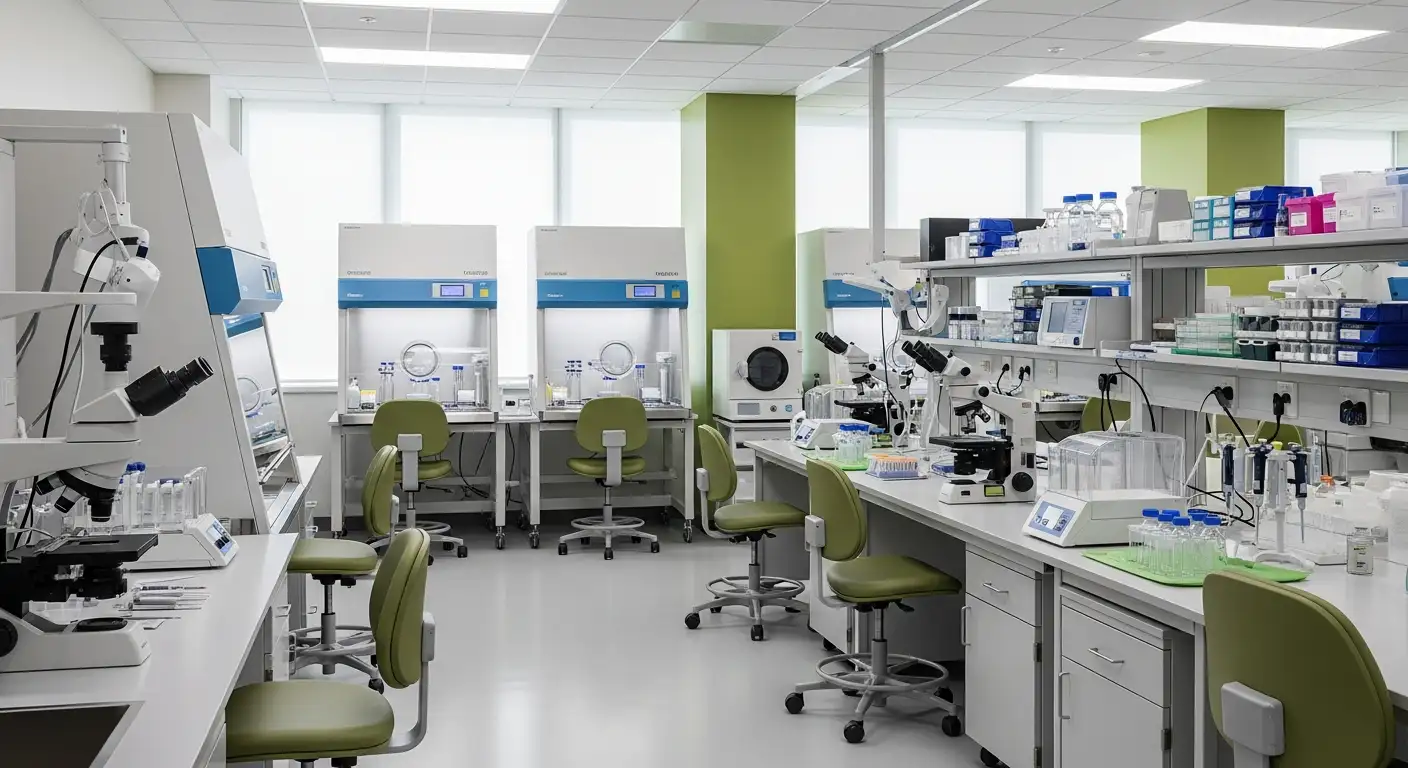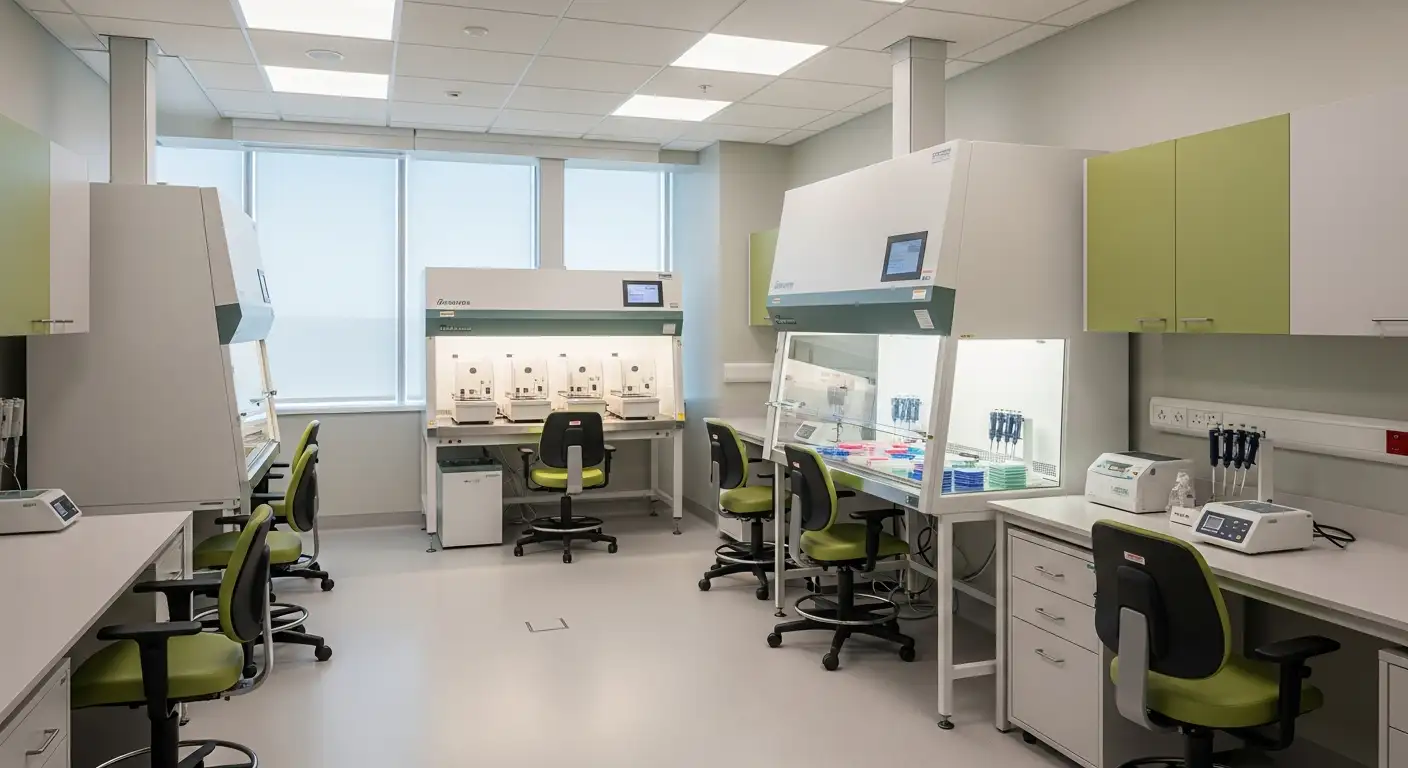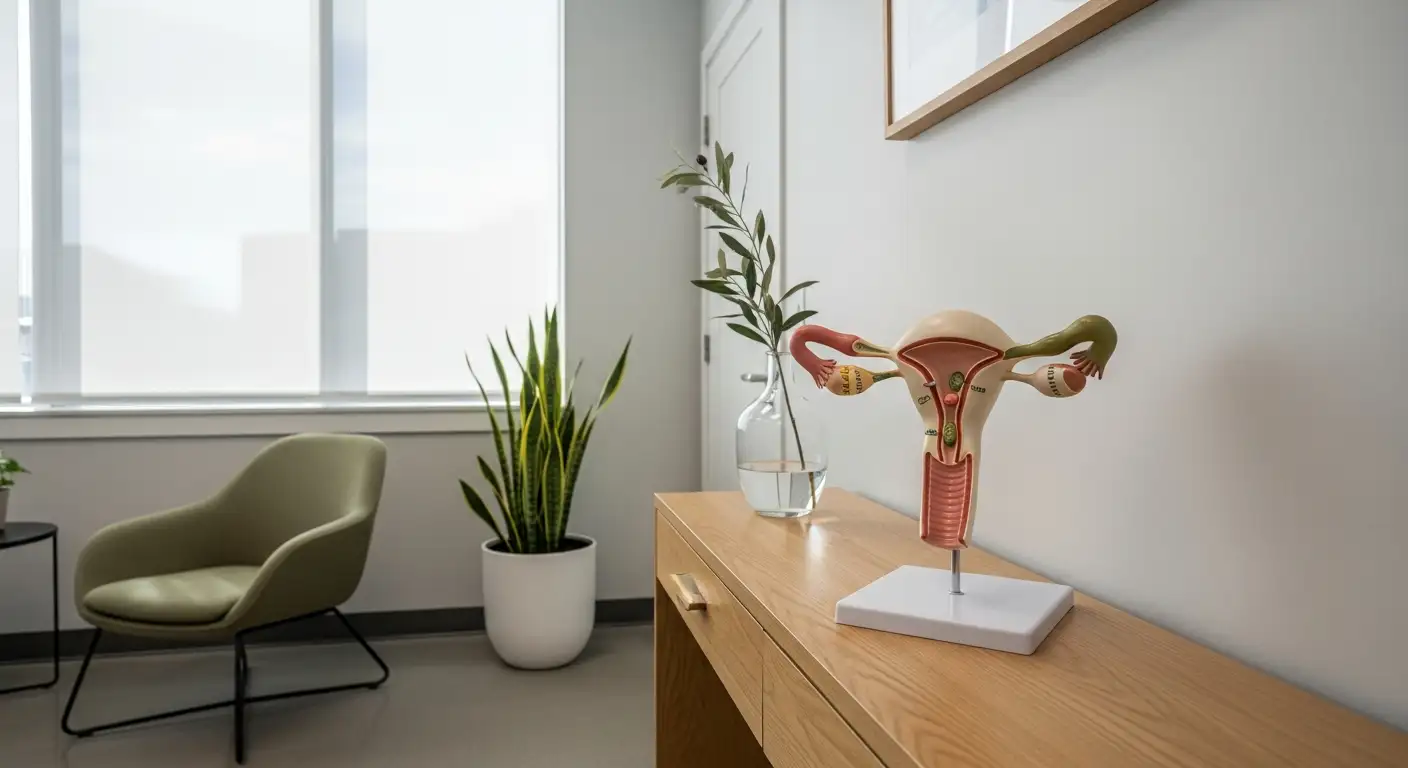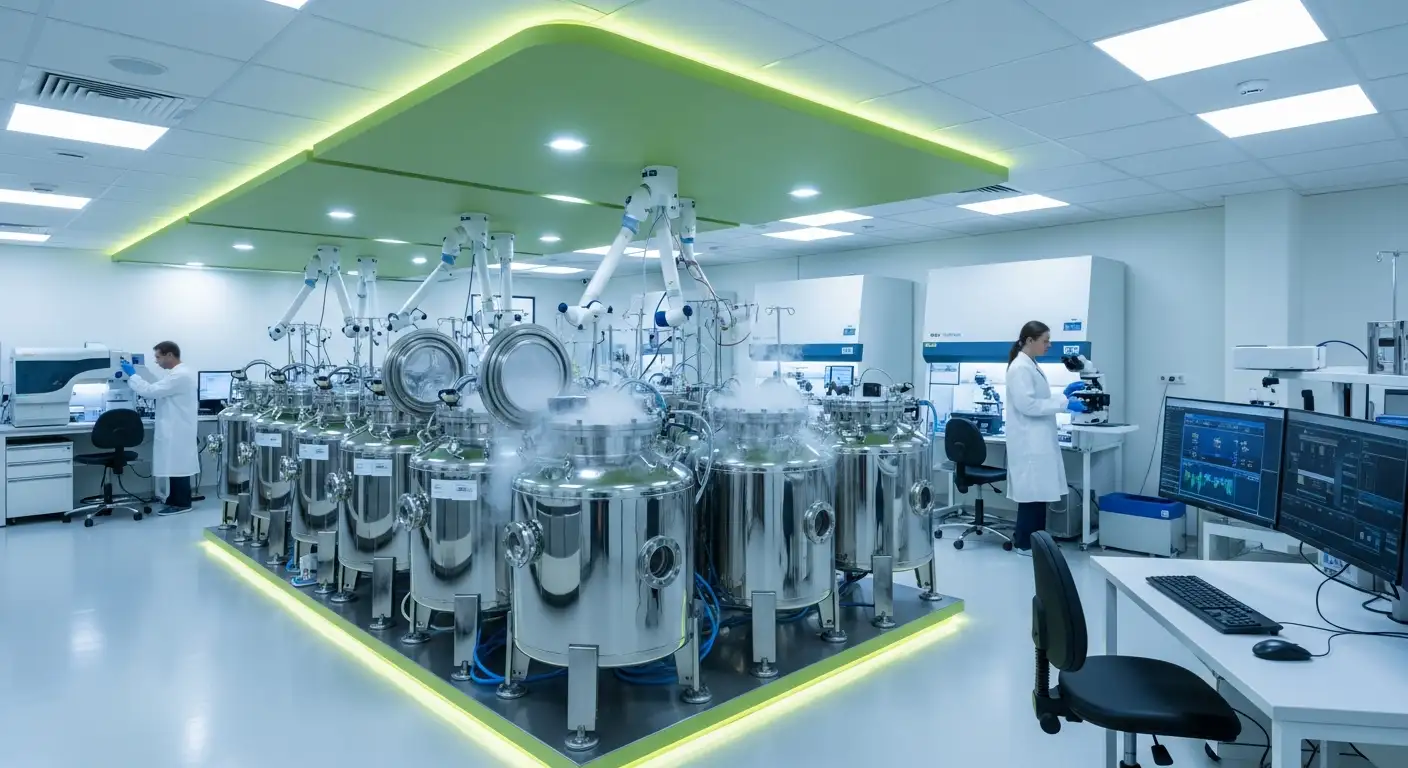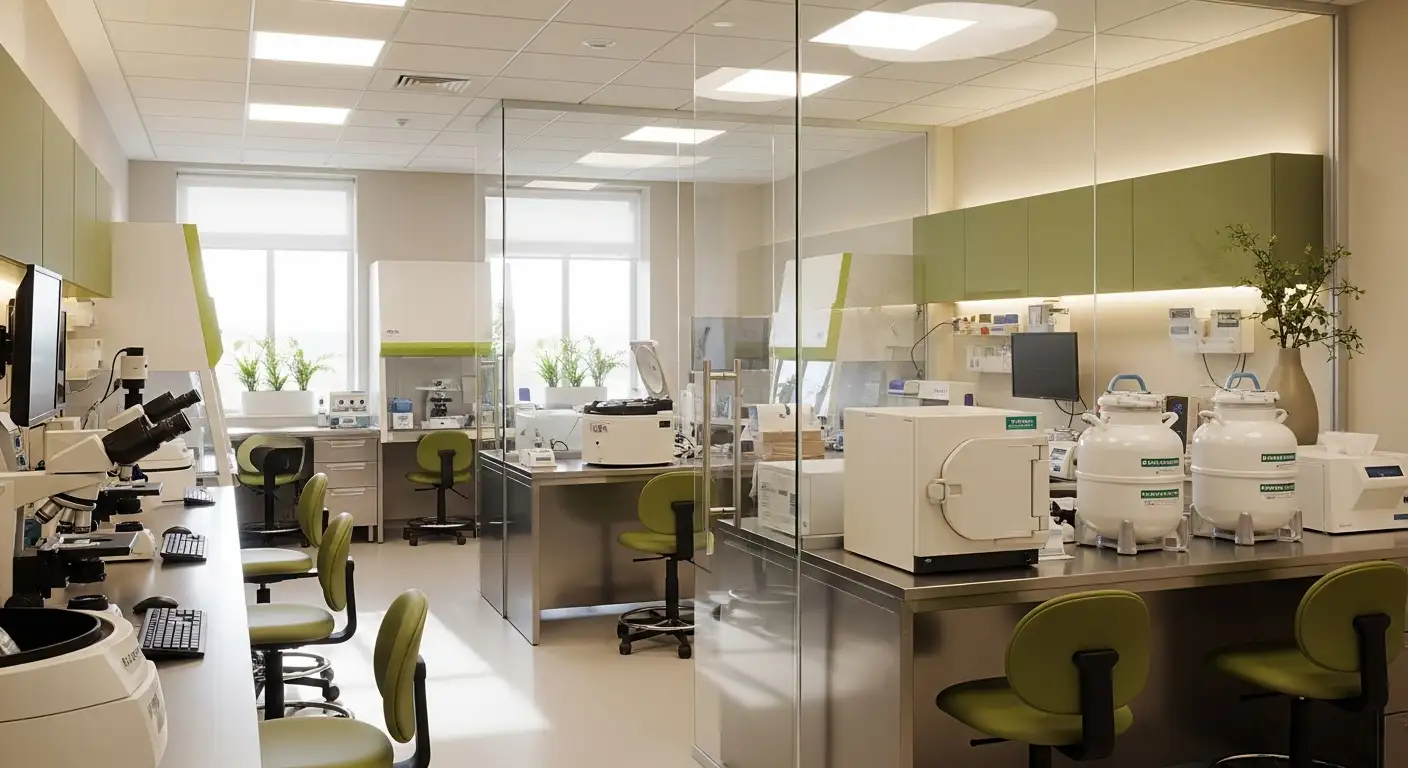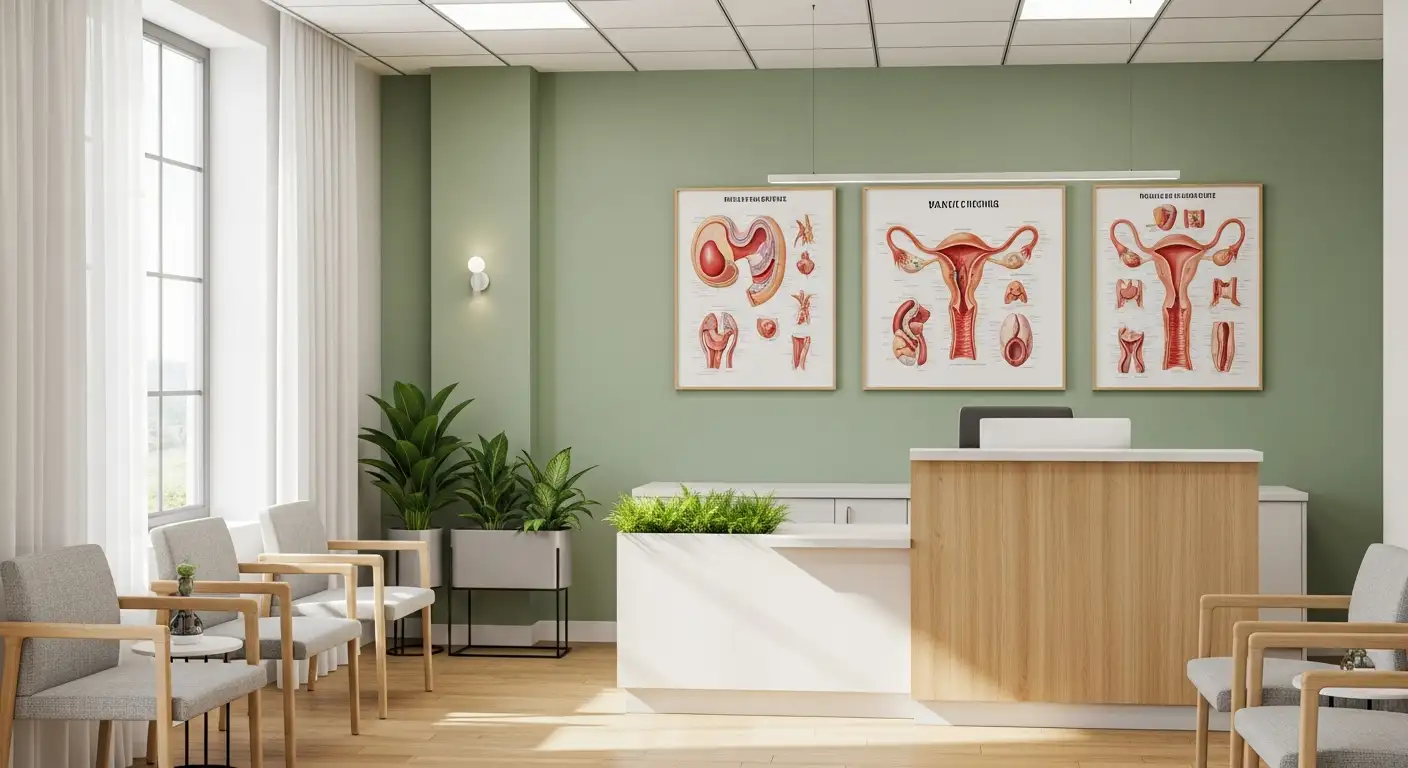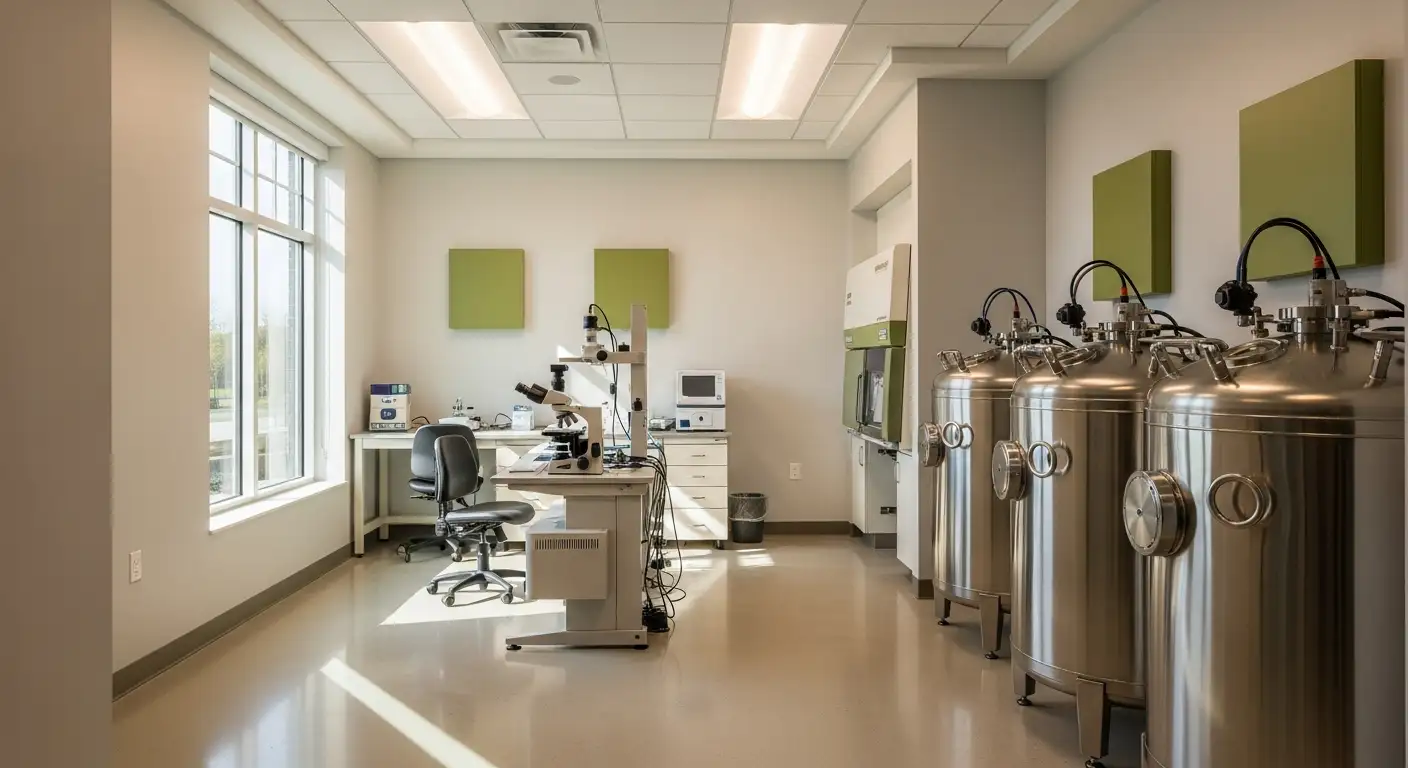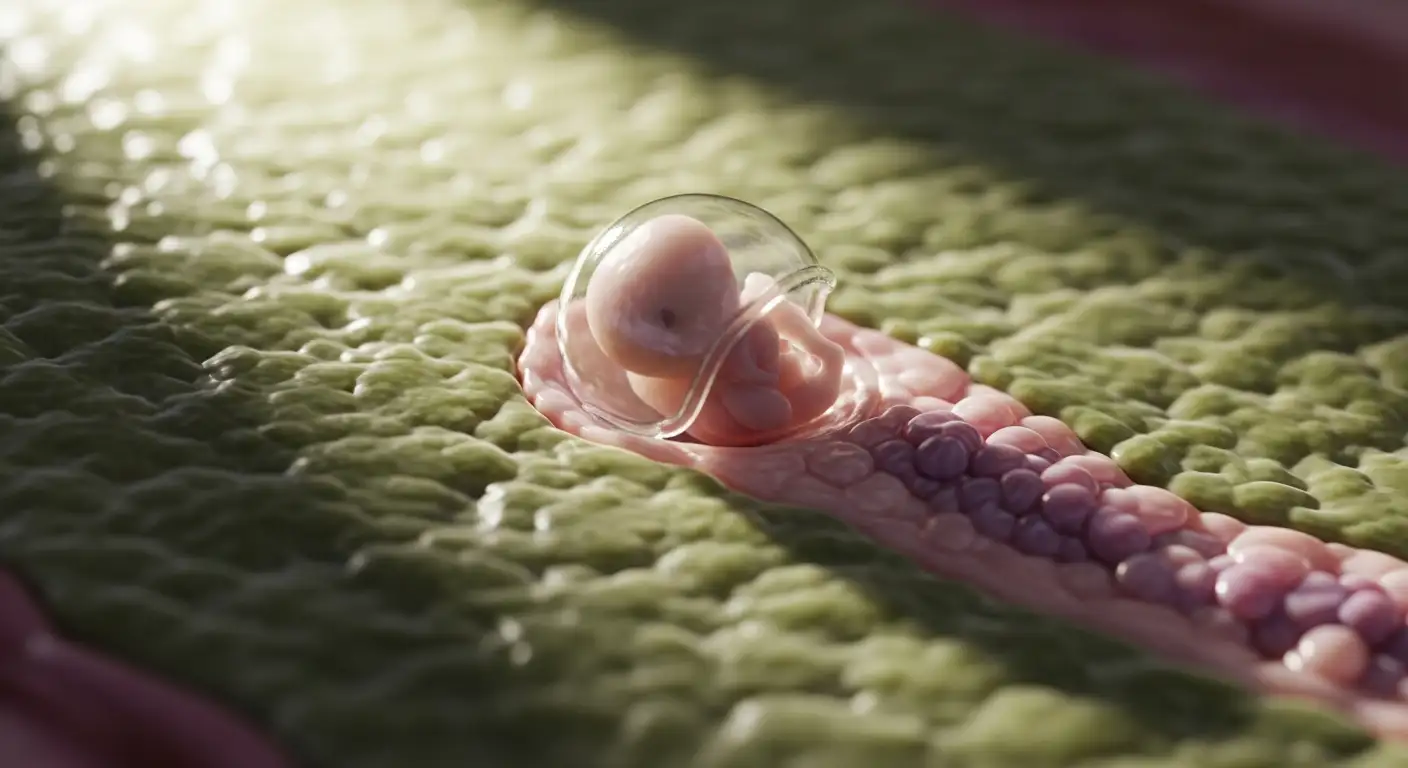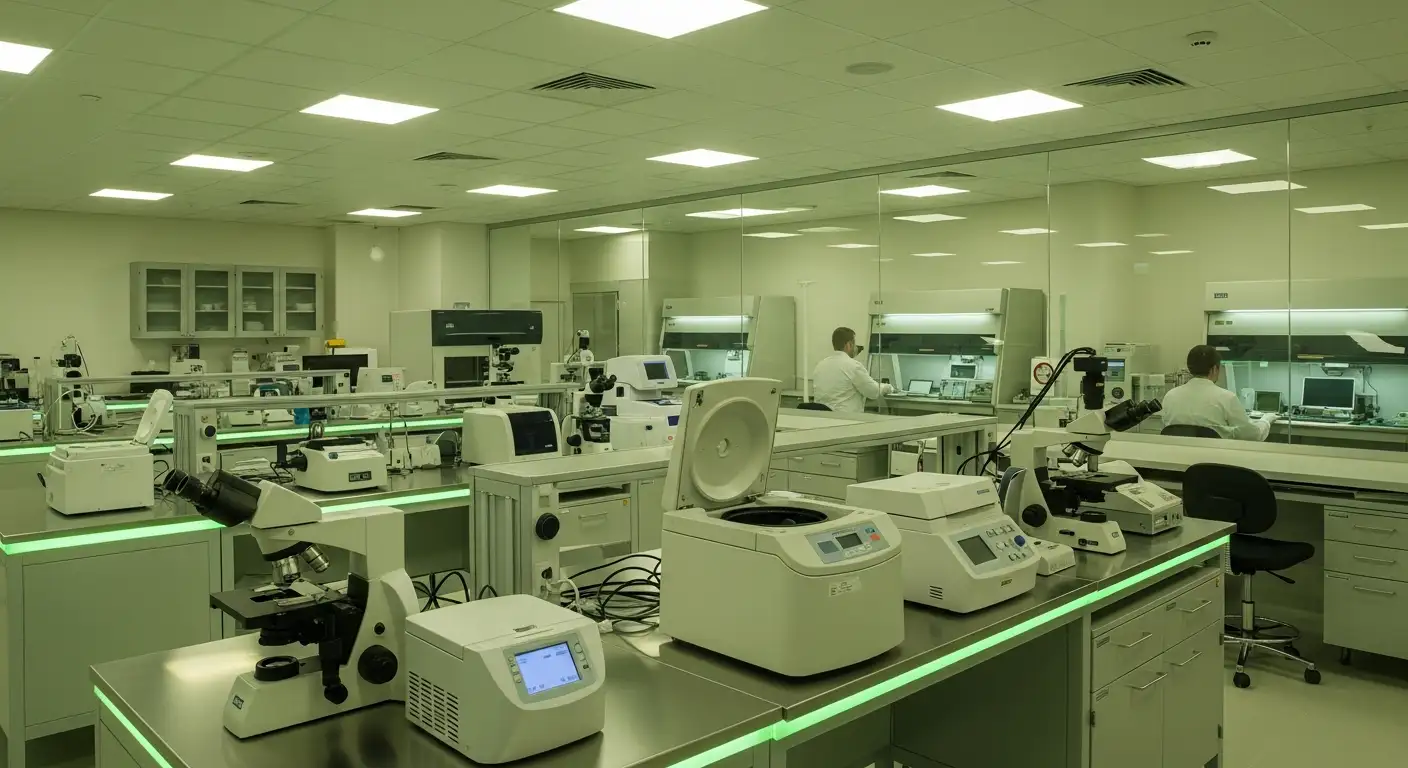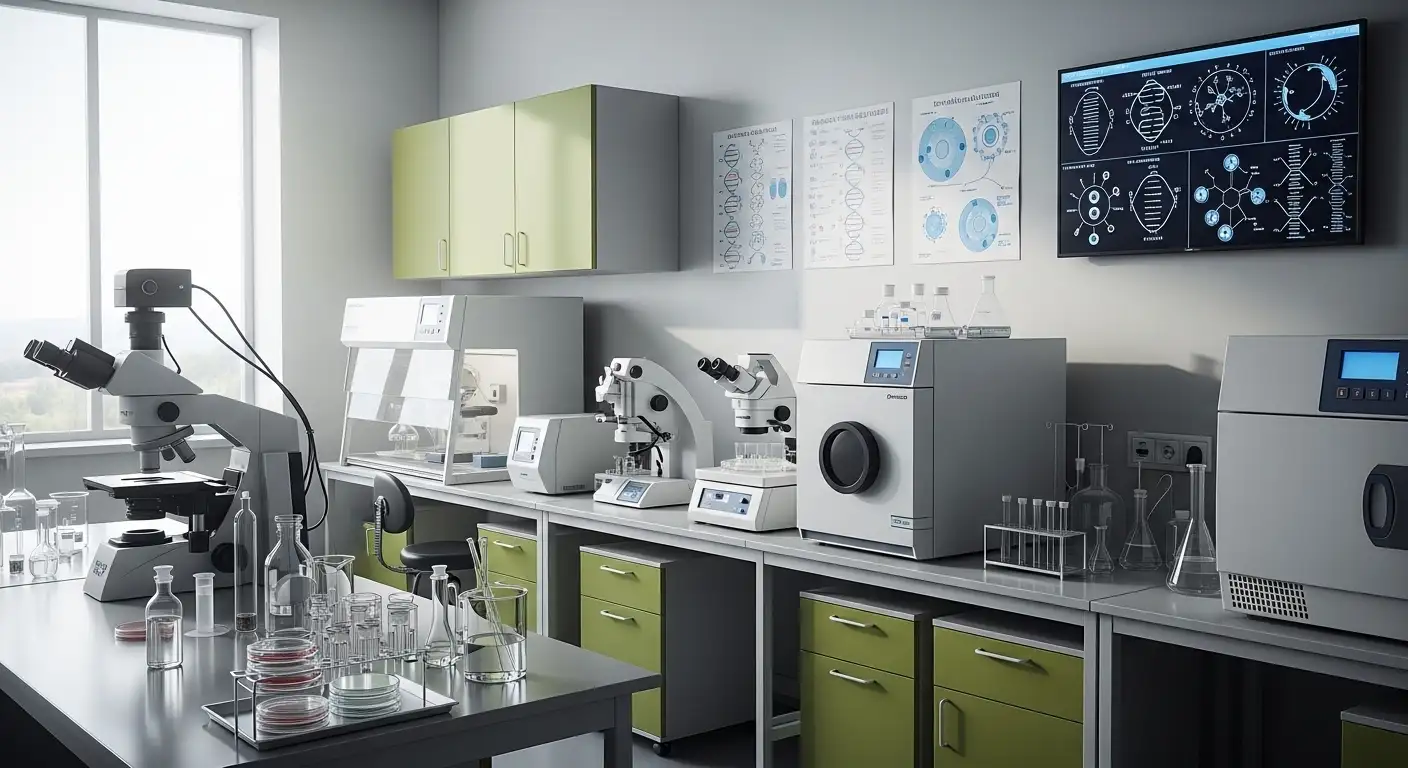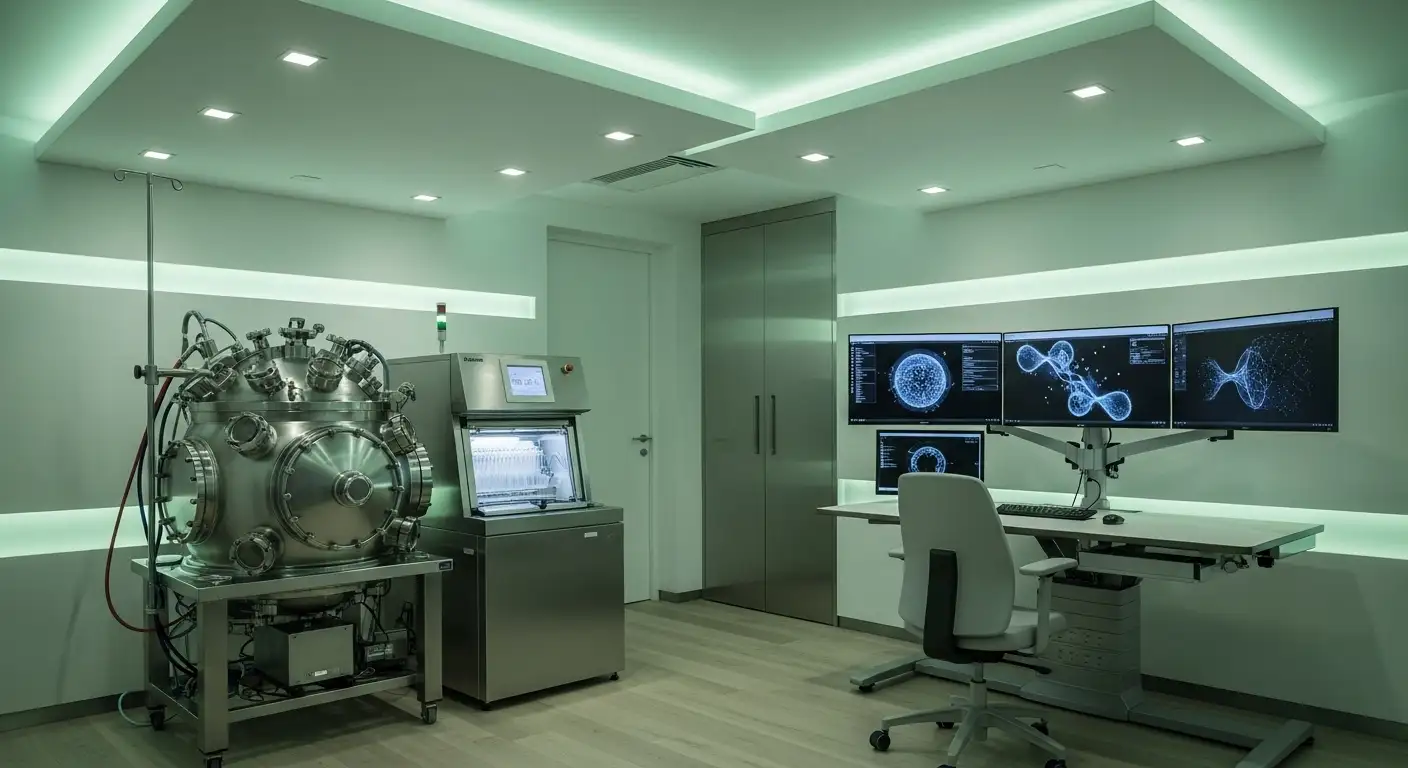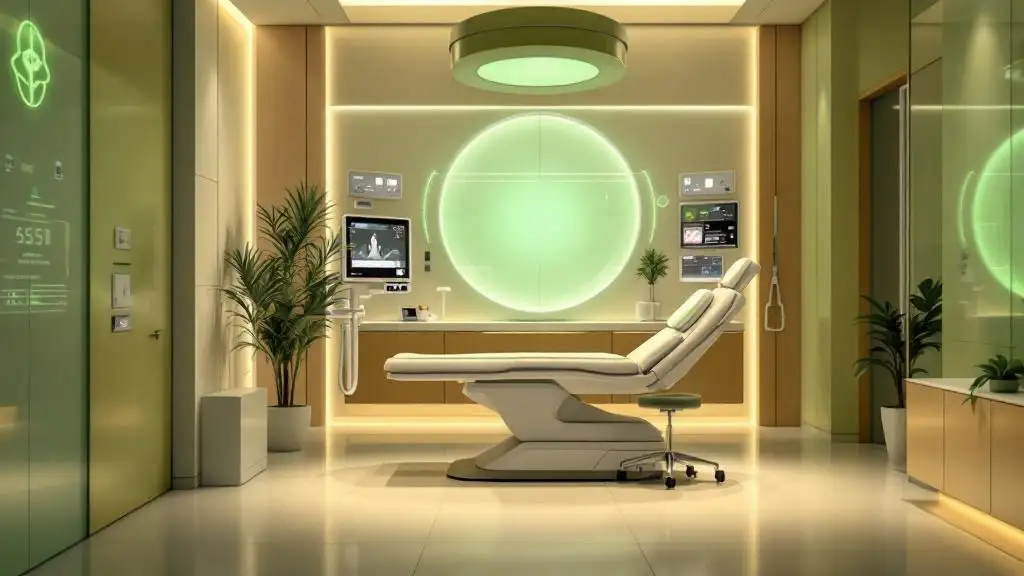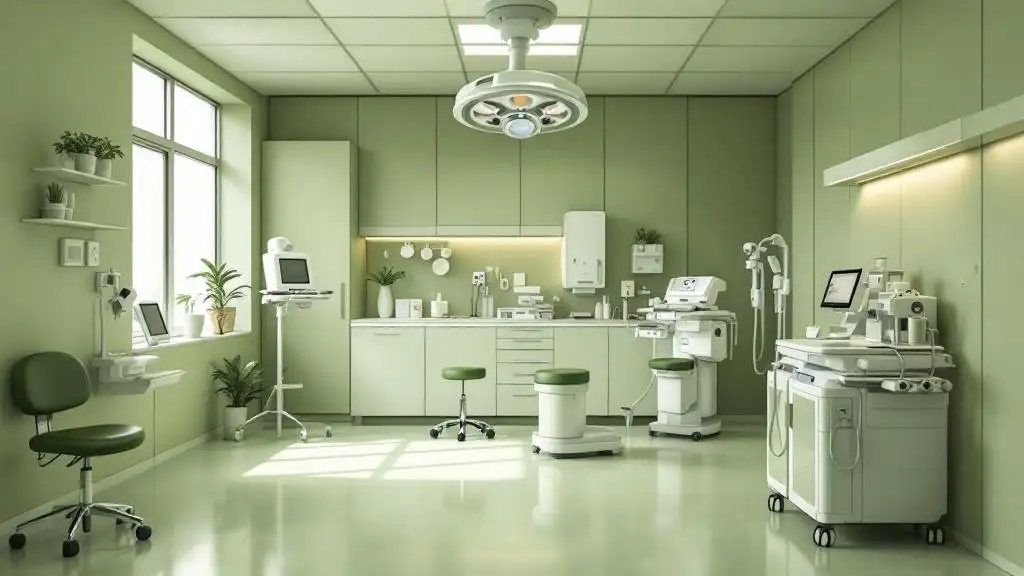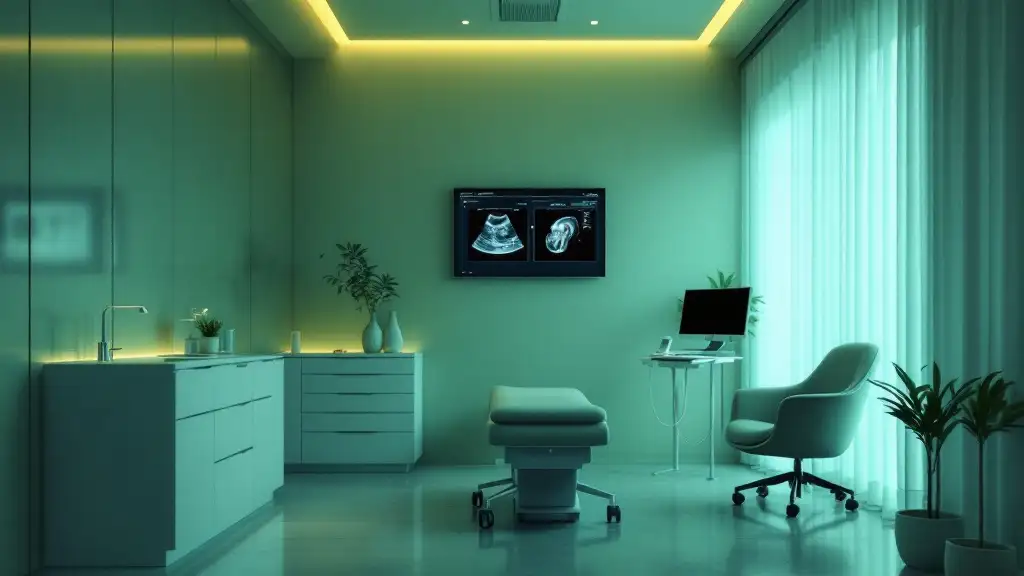Do fertility treatments hurt? What you need to know
Understanding the Physical and Emotional Impact of Fertility Treatments

Navigating the Journey of Fertility Treatment: What to Expect
Fertility treatments open doors to parenthood for many individuals and couples facing challenges with conception. Yet, alongside hope lie concerns about the potential pain and side effects associated with these interventions. This article delves into the physical sensations experienced during fertility procedures, common side effects, and important health considerations, helping you navigate this complex journey with clear expectations and informed choices.
Ovulation and Its Common Discomforts
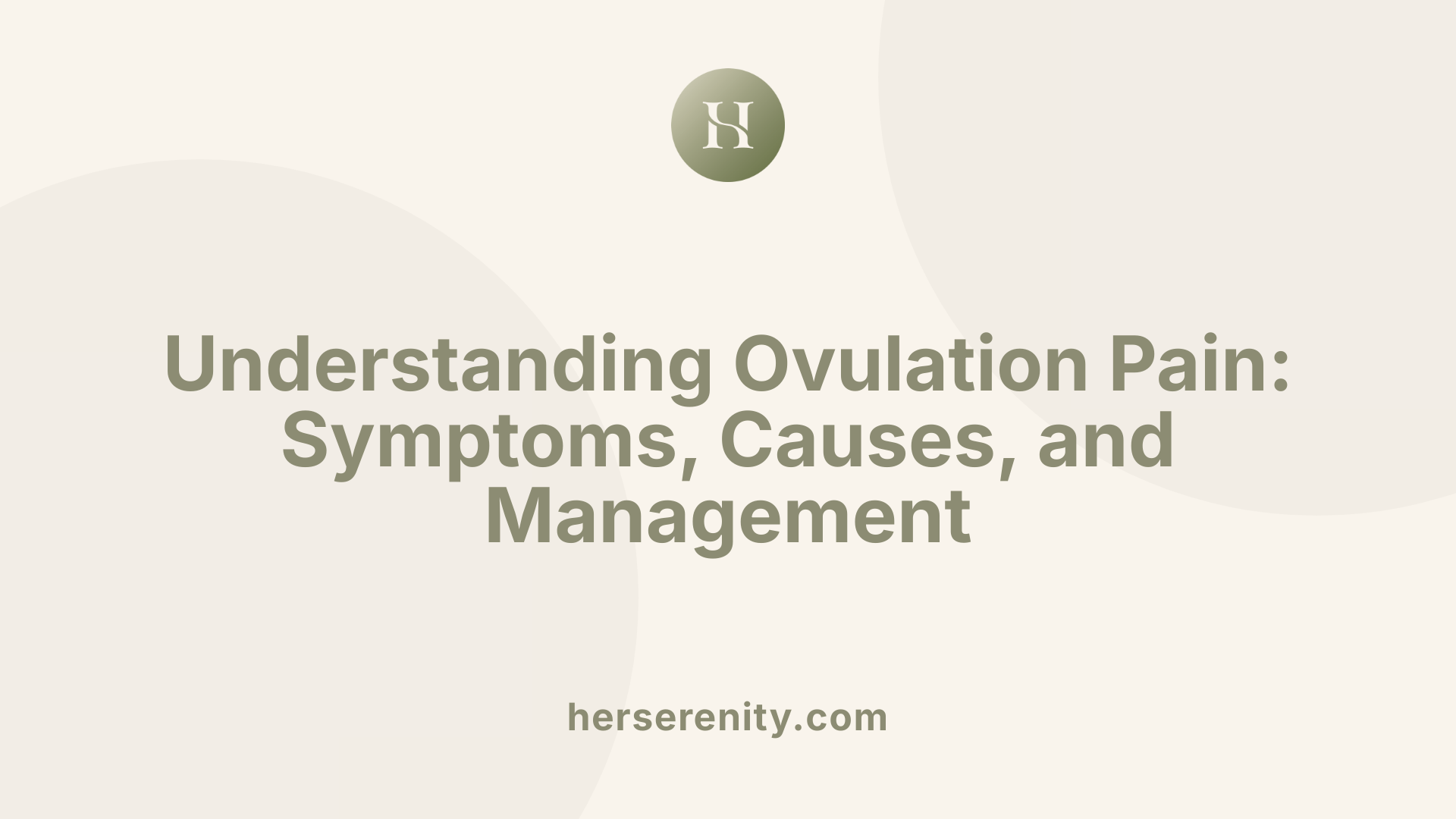
What is ovulation pain?
Ovulation pain, medically known as mittelschmerz, is a type of pelvic pain that occurs during the process of ovulation—the release of an egg from one of the ovaries. It's experienced by up to 40% of people who ovulate and is generally harmless, signaling that ovulation is taking place as part of the menstrual cycle.
Causes and duration of ovulation pain
This pain stems from the stretching and eventual rupture of the ovarian follicle when releasing an egg. It typically happens on the side of the ovary that is actively releasing the egg. Most episodes of ovulation pain are short-lived, lasting anywhere from a few minutes to up to 48 hours.
Symptoms associated with ovulation pain
Common symptoms include twinges or cramps in the lower abdomen, unusual vaginal discharge that is clear and stretchy, light vaginal bleeding, back pain, and sometimes nausea. The pain character can vary from mild discomfort to sharp cramps, generally localized to one side.
Management strategies for ovulation pain
For most people, the discomfort is manageable with over-the-counter pain relievers and home remedies such as heating pads or warm baths. In cases where pain is severe, hormonal birth control may be recommended as it stops ovulation and thus prevents the pain. It is advisable to consult a healthcare provider if the pain is severe, persists for more than three days, or is accompanied by heavy bleeding or fever.
Understanding Infertility and When Treatment Becomes Necessary
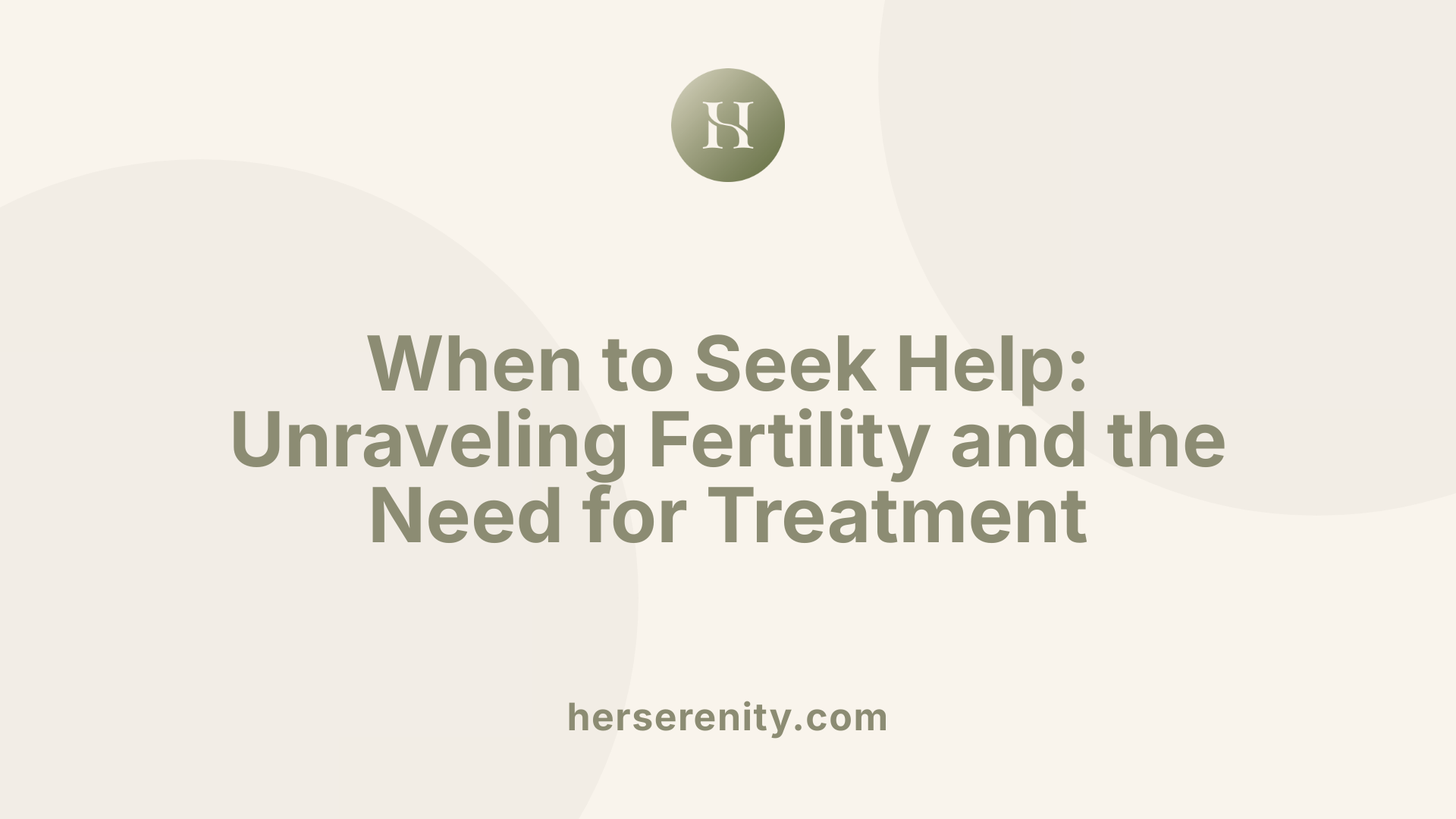
What is infertility?
Infertility is defined as the inability to become pregnant after one year of regular, unprotected intercourse. For women aged 35 or older, this timeframe is shortened to six months because fertility naturally declines with age.
What types of infertility exist?
Infertility can be classified into three main types:
- Primary infertility: When a person has never been pregnant.
- Secondary infertility: Difficulty conceiving after having a previous pregnancy.
- Unexplained infertility: When no identifiable cause is found despite investigations.
What causes infertility in women and men?
Female infertility is often due to ovulatory disorders, which account for about 25% of cases. Other causes include:
- Endometriosis
- Structural abnormalities of the reproductive system
- Autoimmune conditions
- Fibroids
- Thyroid disease
Male infertility commonly results from issues with sperm shape, motility, or quantity. Additional factors influencing male fertility are varicoceles, genetic disorders, high heat exposure, low testosterone levels, and sexual dysfunction.
When should someone seek medical advice?
It's recommended to consult a healthcare provider if you have been trying to conceive for:
- More than 12 months if under age 35
- More than 6 months if age 35 or older
Earlier visits are suggested if risk factors such as irregular menstruation, pelvic pain, or known reproductive issues exist.
Medical evaluation includes medical history, physical exams, hormone testing, imaging (like ultrasounds), and semen analysis for men to determine the underlying causes and guide treatment.
Fertility Treatments: An Overview and Their Physical Impacts
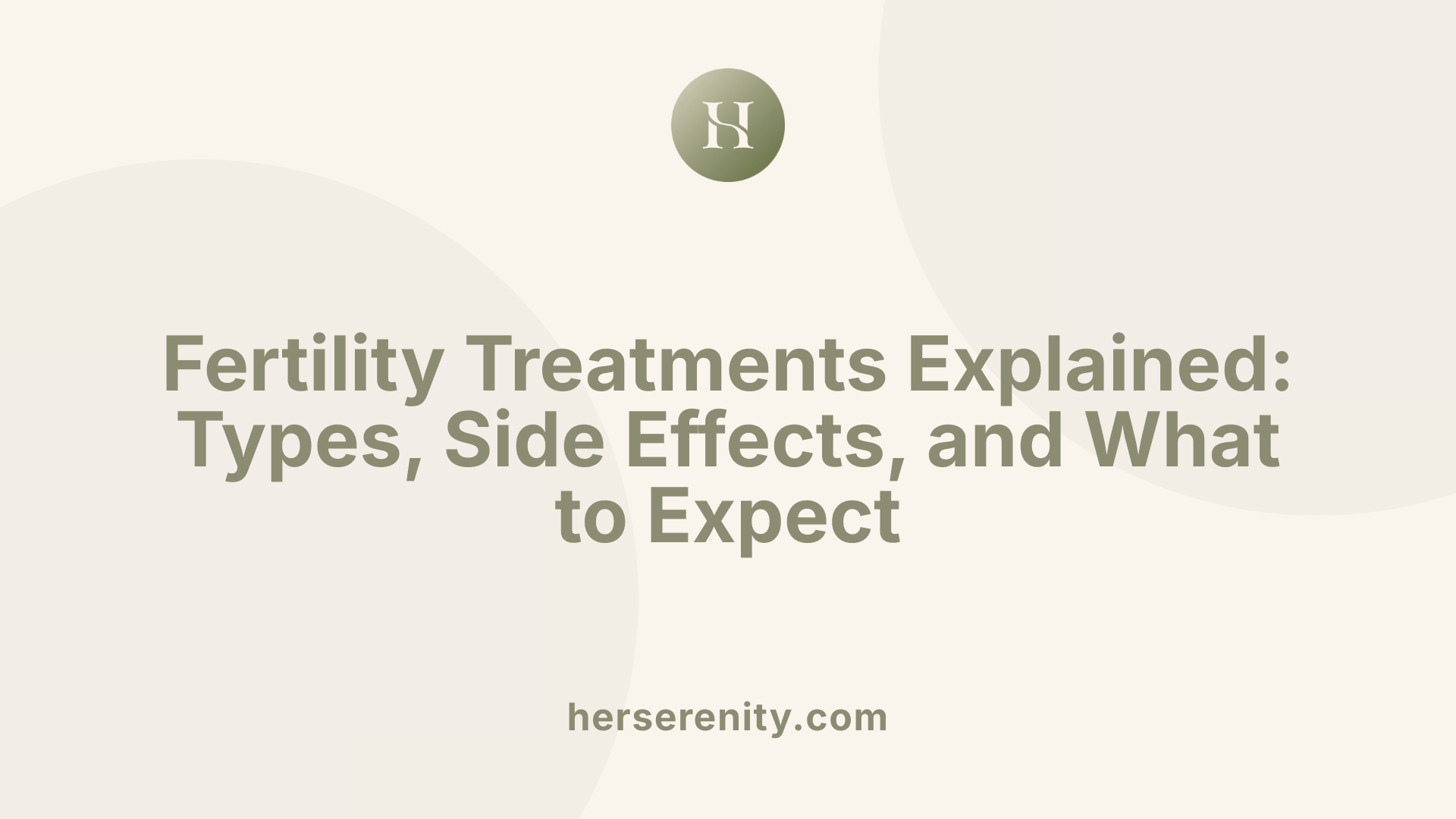
Types of Fertility Treatments
Fertility treatments encompass a range of medical interventions aimed at helping individuals conceive. Common methods include medication to stimulate ovulation or enhance sperm production, surgical procedures to correct anatomical issues or remove blockages, and assisted reproductive technologies such as in vitro fertilization (IVF) and intracytoplasmic sperm injection (ICSI). Medications often involve hormonal therapies like gonadotropins, while surgeries may address tubal disease or endometriosis. IVF and ICSI involve fertilizing eggs outside the body and implanting embryos.
Physical Sensations and Side Effects During Treatments
Patients undergoing fertility treatments can experience various physical sensations and side effects. Mild discomforts like bloating, mood swings, and pelvic tenderness are common, especially with hormonal therapies that stimulate the ovaries. Ovarian hyperstimulation syndrome (OHSS) can occur as a more severe reaction, characterized by painful ovarian swelling, nausea, and abdominal pain requiring prompt medical attention. Treatments involving multiple egg stimulations increase risks for multiple pregnancies, which carry their own health challenges.
Common Mild Discomforts Associated with Treatments
Many individuals report mild side effects such as abdominal pressure, cramps, and nausea during treatment cycles. These symptoms typically result from ovarian stimulation or procedural interventions and tend to resolve with rest or symptom management strategies including over-the-counter pain relievers and hydration. Emotional fluctuations can also occur due to hormonal changes, underscoring the need for supportive care throughout treatment.
The Role of Hormonal Medications and Risks of Ovarian Hyperstimulation Syndrome (OHSS)
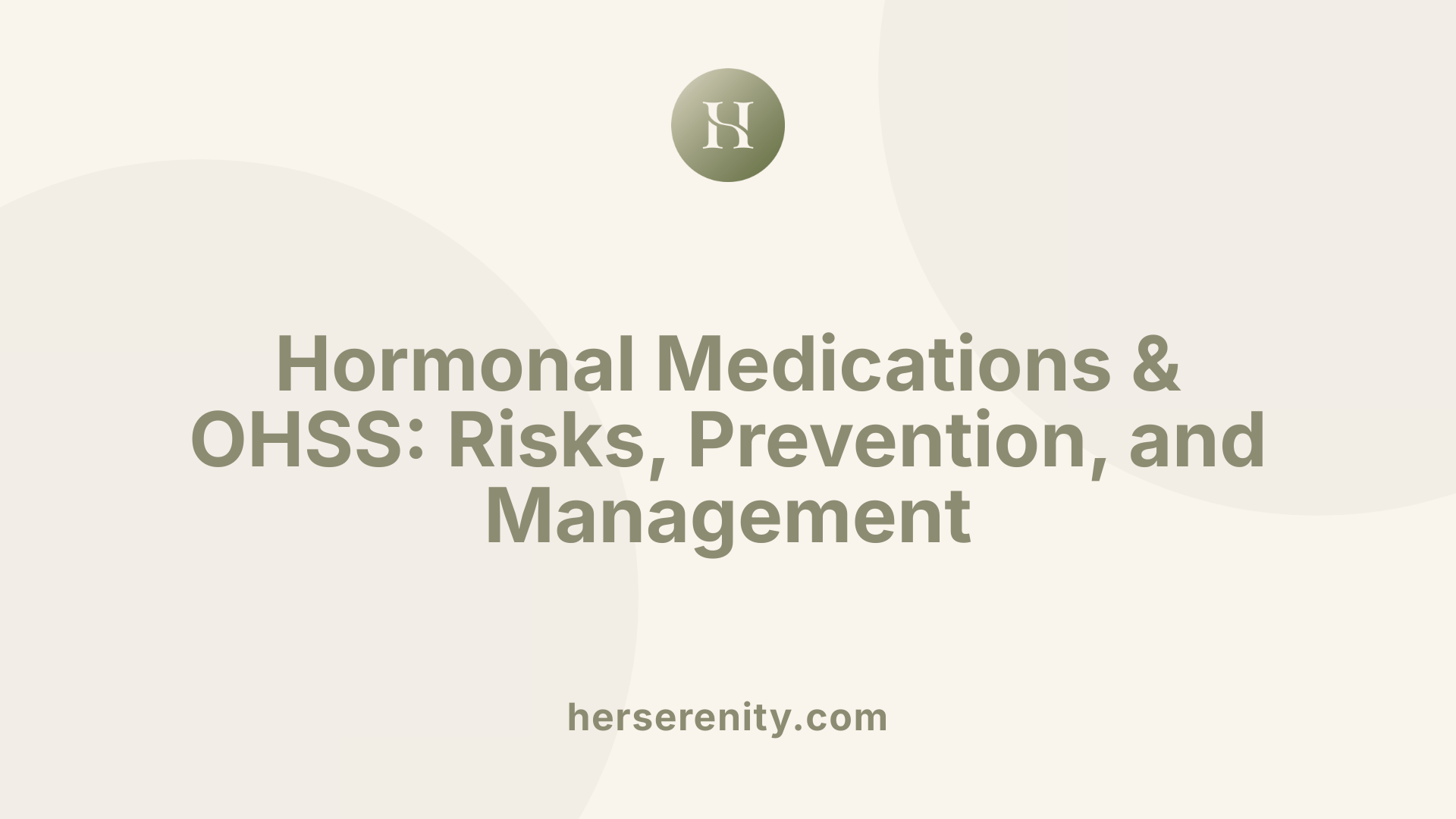
Use of Injectable Hormone Medications
Injectable hormone medications are commonly used in fertility treatments to stimulate ovulation. These drugs increase the production of multiple follicles, enhancing the chances of conception. Compared to oral medications like clomiphene, injectables carry a higher risk of side effects, including ovarian hyperstimulation syndrome (OHSS).
What is OHSS and Its Symptoms
OHSS is an exaggerated response to excess hormones during ovulation induction, leading to swollen, painful ovaries. Mild to moderate symptoms include abdominal pain, bloating, nausea, vomiting, diarrhea, and ovarian tenderness. These symptoms can worsen if pregnancy occurs. Severe OHSS can cause rapid weight gain, intense abdominal pain, persistent vomiting, blood clots, reduced urination, shortness of breath, and a tense, enlarged abdomen.
Risk Factors and Prevention Strategies for OHSS
Risk factors for OHSS include having polycystic ovary syndrome (PCOS), being under 35 years old, low body weight, a high number of ovarian follicles, elevated estrogen levels, and previous episodes of OHSS. Prevention focuses on individualized treatment plans with careful monitoring of hormone levels, using alternative ovulation triggers like GnRH agonists, and freezing embryos during IVF to allow the ovaries to recover.
Severity of OHSS and When to Seek Care
While mild forms of OHSS often resolve with rest and hydration, severe OHSS can be life-threatening due to complications like fluid buildup, electrolyte imbalance, blood clots, and kidney failure. Patients should seek immediate medical attention if they experience symptoms such as severe or worsening abdominal pain, rapid weight gain, decreased urination, or breathing difficulties to prevent serious outcomes.
Pain Related to Fertility Treatments: How Common and How Managed?
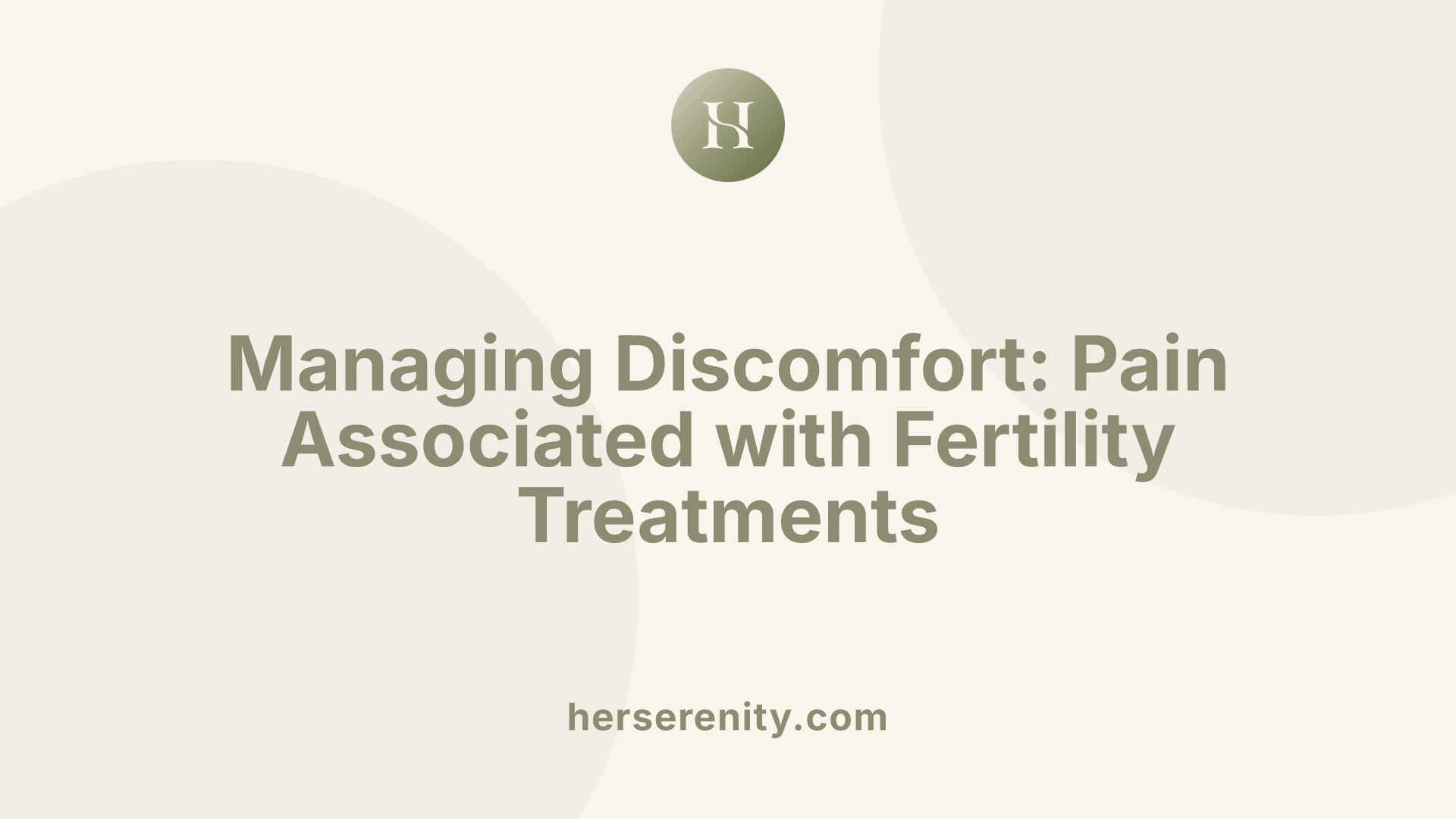
What kinds of pain are associated with fertility treatments?
Pain during fertility treatments can arise from several sources. Egg retrieval procedures often cause abdominal or pelvic discomfort due to the invasive nature of collecting eggs from the ovaries. Additionally, injections used to stimulate the ovaries may lead to localized pain or soreness.
Ovulation pain, or mittelschmerz, can also be part of fertility treatment cycles. This pain results from follicle growth and rupture during ovulation and is experienced by up to 40% of people who ovulate. It typically manifests as mild to moderate cramps or twinges on the side of the ovary releasing the egg.
How is pain managed during fertility treatments?
Managing pain effectively is an important component of fertility care. Common strategies include:
- Over-the-counter pain relievers such as anti-inflammatory medications.
- Use of heating pads or warm baths to relax abdominal muscles and ease cramps.
- Hormonal birth control to suppress ovulation in cases where severe ovulation pain occurs.
During egg retrieval, doctors may use sedation or anesthesia to minimize discomfort. Patients are also monitored closely to manage any post-procedural pain.
When should pain raise concern?
While mild to moderate pain is common and typically harmless, certain symptoms indicate complications requiring medical attention. These include:
- Severe or prolonged pain lasting more than 48 hours.
- Symptoms suggestive of ovarian hyperstimulation syndrome (OHSS), such as rapid weight gain, severe abdominal pain, nausea, and vomiting.
- Signs of infection or other medical issues like fever, heavy bleeding, or intense pelvic pain.
In such cases, early consultation with a healthcare provider is crucial to ensure safety and adjust treatment if necessary.
Risks Associated with Multiple Pregnancies and Other Complications
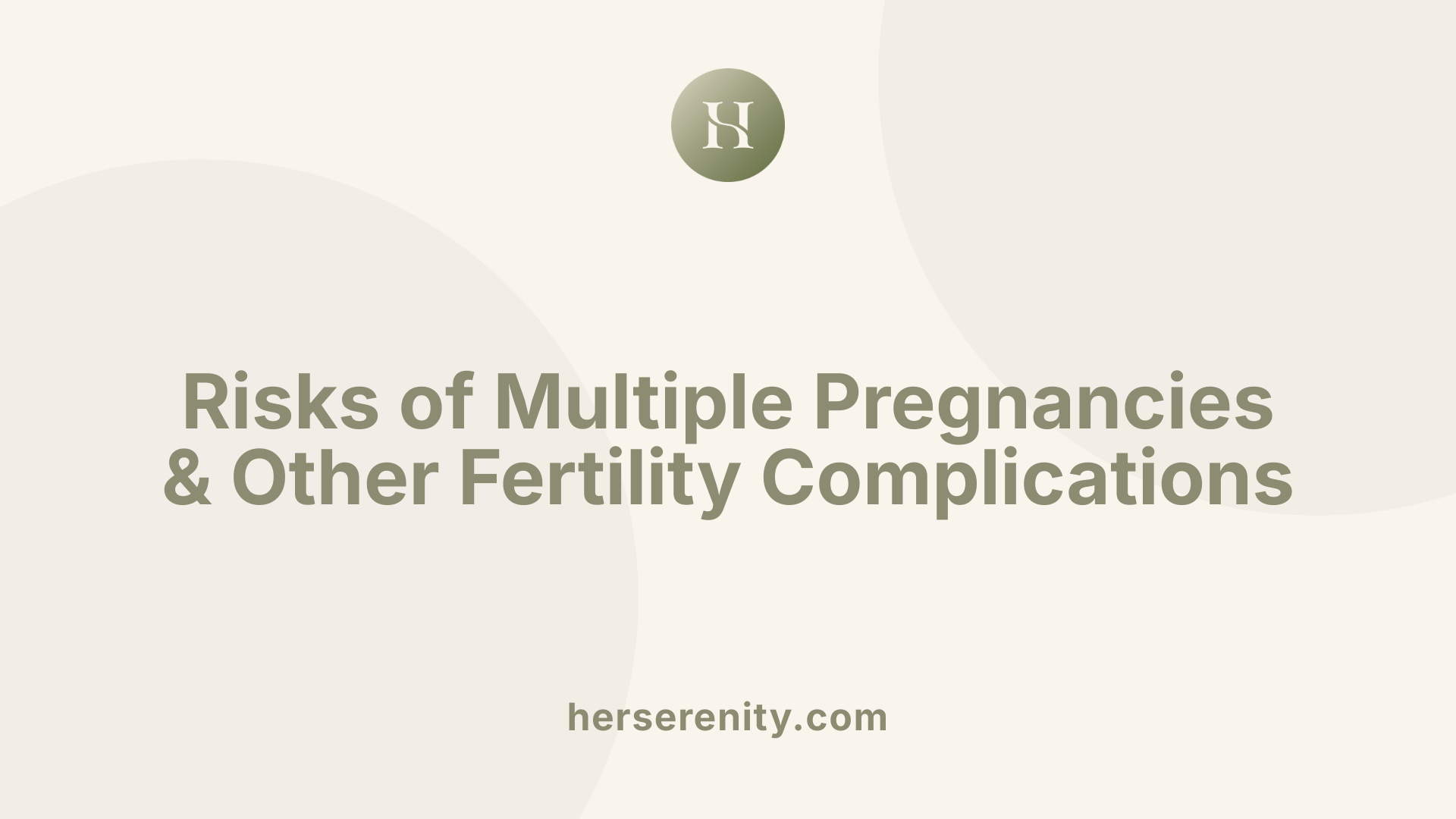
Why does fertility treatment increase the risk of twins or more?
Fertility treatments, especially those involving ovulation stimulation with gonadotropins or procedures like in vitro fertilization (IVF), can cause the release of multiple eggs. This increases the likelihood of multiple embryos implanting, leading to twins, triplets, or even higher-order multiples. The chance of multiple pregnancies can be as high as 36% with certain treatments.
What health risks are linked to multiple births?
Multiple pregnancies carry higher risks compared to singleton pregnancies. These risks include premature birth, low birth weight, and complications during delivery. Even single babies conceived via fertility treatment may have an increased risk of premature birth and birth defects compared to natural conception.
What other complications can arise from fertility treatments?
Fertility procedures can increase the risk of ectopic pregnancy, where an embryo implants outside the uterus, which is a serious medical condition. Cycle failure, where stimulated cycles do not result in pregnancy, is also a possible outcome. Additionally, ovarian hyperstimulation syndrome (OHSS), a potentially serious condition caused by excessive ovarian response to hormones, can occur.
Are there long-term risks such as cancer concerns?
Some studies suggest a possible elevated risk of certain cancers, such as ovarian and endometrial cancers, linked to fertility treatments, but the evidence is ongoing and not conclusive. Overall, fertility treatments have not demonstrated a definitive increase in birth defects or cancer risk but require careful monitoring and individualized planning to minimize potential risks.
Fertility Treatment in Women with Endometriosis: Challenges and Pain Considerations
How Does Endometriosis Affect Fertility and Ovarian Reserve?
Endometriosis significantly impacts fertility by reducing ovarian reserve and disrupting normal ovulation. The condition causes pelvic adhesions, inflammatory reactions, and tissue fibrosis that damage ovarian follicles. Women with moderate to severe endometriosis show lower anti-Müllerian hormone (AMH) levels and antral follicle count (AFC), indicating diminished ovarian reserve. Additionally, the presence of endometriomas impairs blood circulation in the ovary, leading to follicle loss and earlier menopause.
What Types of Pain Are Associated with Endometriosis and Its Treatments?
Endometriosis causes chronic pelvic pain along with pain during ovulation or menstruation. Surgical treatments to remove endometriomas can cause additional discomfort and potential pain due to thermal damage or tissue removal. Ovulation pain, or mittelschmerz, may be more pronounced in these patients. Managing pain often involves medications, and in some cases, hormonal treatments are used to prevent ovulation and reduce pain symptoms.
What Are the Surgical and Assisted Reproductive Options?
Surgical removal of endometriomas may improve spontaneous pregnancy rates in mild to moderate cases but risks further decreasing ovarian reserve. Minimally invasive techniques like two- or three-step surgeries aim to preserve ovarian tissue. Assisted reproductive technologies (ART) such as intrauterine insemination (IUI) and in vitro fertilization (IVF) are common options when surgery is less effective or ovarian reserve is compromised. IVF outcomes in women with endometriosis are comparable to those without, despite fewer oocytes retrieved.
How to Balance Treatment Benefits with Ovarian Reserve Preservation?
Deciding between surgery and ART requires careful evaluation of disease severity and ovarian reserve status. Aggressive surgery may further reduce ovarian reserve, so minimally invasive procedures and conservative management are preferred. ART allows for bypassing some fertility barriers with less impact on ovarian reserve. Individualized treatment plans are essential, weighing the benefits of pain relief, fertility improvement, and ovarian preservation outcomes.
| Aspect | Details | Considerations |
|---|---|---|
| Impact on Ovarian Reserve | Lower AMH, follicle loss due to inflammation and endometriomas | Early menopause risk, fertility decline |
| Pain | Chronic pelvic pain, ovulation pain, post-surgical discomfort | Pain management crucial |
| Surgical Treatment | Removal of endometriomas, minimally invasive techniques | Risk of reducing ovarian reserve |
| Assisted Reproductive Techniques | IUI and IVF with comparable success to unaffected women | Fewer oocytes retrieved but similar live birth rates |
| Treatment Balance | Individualized plan focusing on fertility preservation and symptom relief | Minimizing ovarian damage and optimizing outcomes |
Emotional and Physical Support During Fertility Treatment
Why is emotional support important during fertility treatment?
Fertility treatment can be an emotionally challenging journey filled with hope, uncertainty, and stress. Emotional support helps patients cope with anxiety, disappointment, and the unpredictability of treatment outcomes. Counseling, support groups, and open communication with loved ones or professionals can foster resilience and improve overall well-being.
How can physical discomfort and stress be addressed?
Physical symptoms such as bloating, pain, or ovarian hyperstimulation syndrome (OHSS) may arise during treatment. Managing these involves:
- Regular medical monitoring to detect complications early
- Using pain relief methods recommended by healthcare providers
- Relaxation techniques such as warm baths or heat pads to ease discomfort
- Prompt reporting of severe symptoms like rapid weight gain, severe pain, or breathing difficulties
Stress reduction is also crucial, as chronic stress can negatively impact fertility treatment success.
What lifestyle modifications can enhance treatment outcomes?
Adopting healthy habits supports the body and mind through treatment, including:
- Maintaining a healthy weight
- Avoiding smoking, excessive alcohol, and recreational drugs
- Engaging in moderate physical activity without overexercising
- Eating a balanced diet rich in nutrients
These changes can improve fertility treatment effectiveness and reduce the risk of complications.
How should patients communicate with providers about pain and safety?
Clear and honest communication with healthcare providers is vital. Patients should:
- Report all symptoms, no matter how mild, especially if pain intensity changes or new symptoms appear
- Discuss concerns about medication side effects or emotional struggles
- Understand the signs that require urgent medical attention, such as severe pain, fever, or unusual bleeding
Collaborative communication helps tailor treatment plans safely and comfortably, ensuring timely interventions when necessary.
Preventive Measures and Preparing for Fertility Treatment

Healthy lifestyle for optimal fertility
Maintaining a healthy lifestyle is essential for improving fertility outcomes. Achieving and preserving a healthy weight through balanced nutrition and regular physical activity supports hormonal balance and ovulation. Avoiding excessive exercise is also advised to prevent negative effects on fertility.
Avoiding smoking, alcohol, and environmental toxins
Smoking and excessive alcohol consumption can harm reproductive health in both men and women, reducing fertility chances. Additionally, exposure to environmental toxins and certain medications should be limited as these factors can negatively impact sperm quality, ovulation, and overall reproductive function.
Considering fertility preservation when appropriate
Fertility preservation techniques such as freezing eggs or sperm are recommended for individuals facing medical treatments or age-related fertility decline. Early counseling about these options helps safeguard reproductive potential, especially when future fertility might be compromised.
Early consultation recommendations
Consulting a healthcare provider early is important if conception is not achieved after six months for women aged 35 or older, or after 12 months for younger women. Early evaluation aids in diagnosing underlying causes and implementing timely treatment measures, improving chances of success.
Monitoring, Diagnostics, and Individualized Treatment Planning
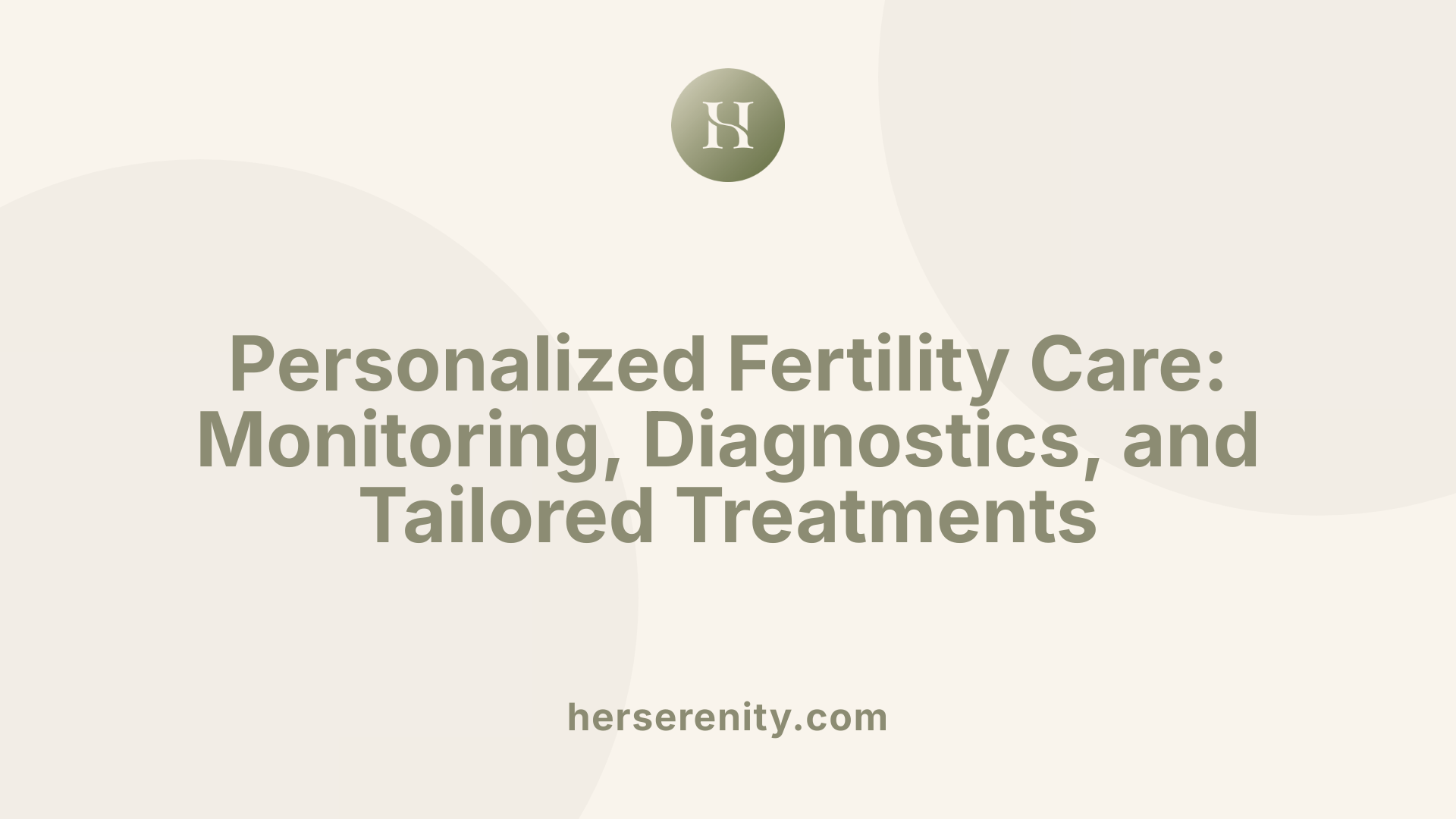
Use of Diagnostic Imaging and Lab Tests
In fertility treatments, various diagnostic tools play a crucial role in evaluating reproductive health and planning intervention strategies. For women, imaging techniques such as ultrasound, hysteroscopy, and laparoscopy assess the condition of ovaries, fallopian tubes, and uterine structures. Blood tests measure hormone levels to gauge ovarian reserve and detect ovulatory disorders or conditions like endometriosis. Men undergo semen analysis and hormone testing to identify sperm-related issues.
Personalized Medication and Treatment Protocols
Treatment plans are tailored to each patient's specific diagnosis and reproductive goals. Medications to stimulate ovulation or enhance sperm production are prescribed based on underlying conditions. In cases requiring assisted reproduction like IVF, protocols vary in hormone doses to optimize egg retrieval while minimizing risks. For instance, adjustments may be made to prevent ovarian hyperstimulation syndrome (OHSS) by using alternative medication triggers or dose modifications.
Importance of Monitoring for Side Effects and Pain
Close monitoring during fertility treatments ensures early detection of side effects such as OHSS, characterized by ovarian swelling and abdominal discomfort. Patients are frequently evaluated for symptoms including pain, bloating, nausea, and changes in weight or urine output. Any severe or persistent pain prompts timely medical evaluation to rule out complications and adjust therapy accordingly.
Adjustments to Minimize Risks and Discomfort
Individualized care involves ongoing reassessment to balance treatment efficacy with safety. This may include modifying hormone dosages, postponing cycles, or freezing embryos to reduce complications. Pain management approaches, like using over-the-counter analgesics or hormonal contraceptives, help alleviate ovulation-related discomfort without impacting fertility goals. Ultimately, monitoring and flexibility in treatment enhance patient well-being and improve fertility outcomes.
When to Seek Medical Attention: Recognizing Serious Symptoms
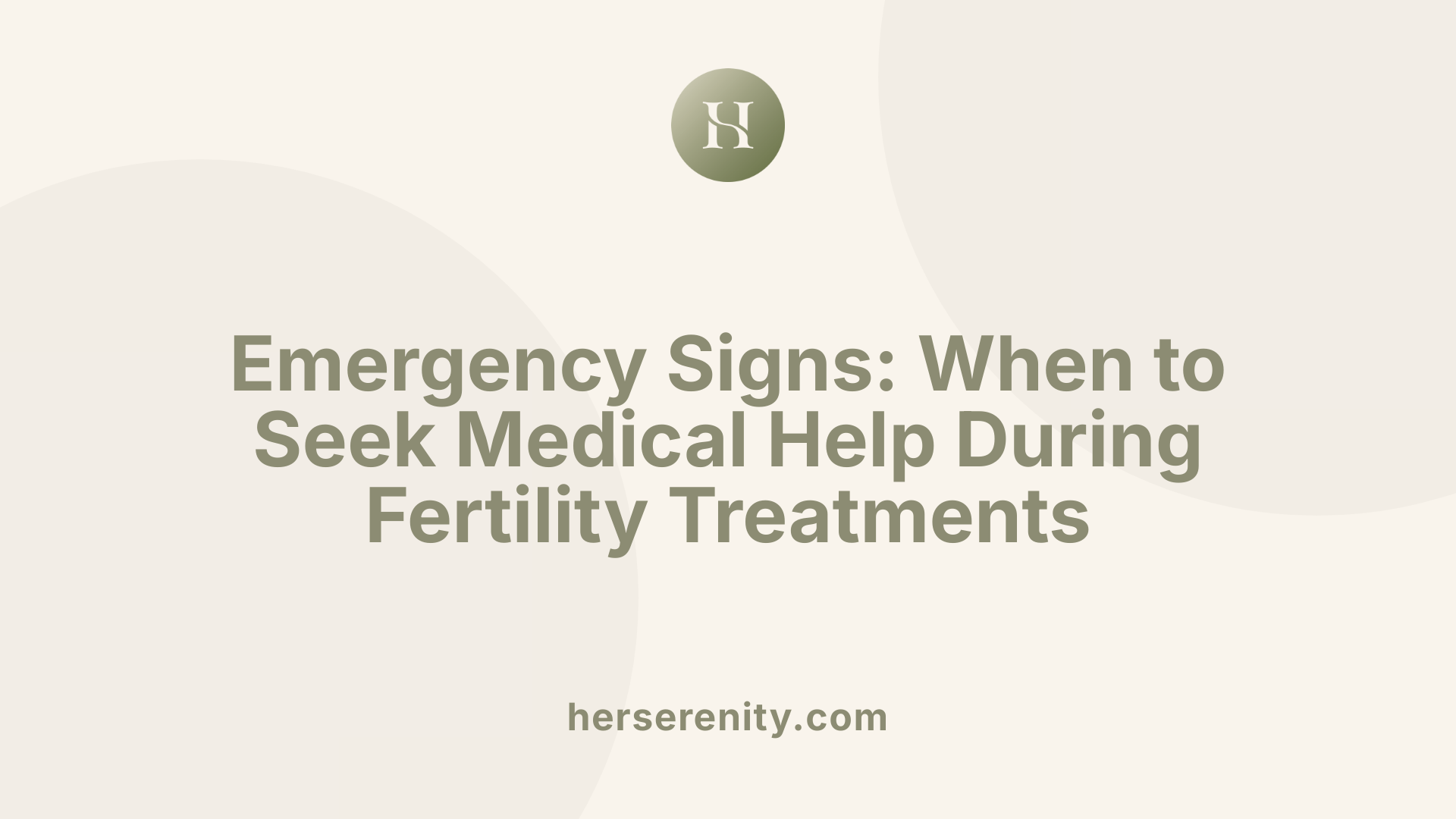
Symptoms That Require Prompt Care During Treatment
During fertility treatments or ovulation-related symptoms, certain signs indicate the need for immediate medical consultation. These include severe pelvic or abdominal pain persisting beyond usual ovulation discomfort, high fever, uncontrollable nausea or vomiting, and heavy vaginal bleeding. Additionally, symptoms like pain during urination or abnormal vaginal discharge could signal infections that require urgent attention.
Signs of Severe Pain, Infection, or OHSS
Ovarian hyperstimulation syndrome (OHSS) is a serious potential complication of fertility treatments involving injectable hormones. Warning signs include rapid weight gain, severe abdominal pain, persistent nausea and vomiting, decreased urination, shortness of breath, and abdominal swelling. Severe OHSS may also manifest with blood clots or ovarian torsion symptoms and must be addressed promptly to prevent life-threatening complications.
Role of Healthcare Providers in Managing Complications
Healthcare providers play a critical role by monitoring patients closely throughout fertility treatments and ovulation management. They utilize diagnostic tools such as ultrasounds and blood tests to detect complications early. Individualized treatment adjustments, including medication changes or temporary treatment suspension, aim to minimize risks and manage symptoms effectively. Providers also offer guidance on when emergency care may be needed.
Ensuring Patient Safety During Treatment Journey
Patient safety is paramount in managing fertility treatments and ovulation-related pain. Patients are encouraged to report any unexpected or worsening symptoms immediately. Regular follow-ups and clear communication with healthcare teams help in timely intervention, thus reducing adverse outcomes. Education on recognizing early warning signs empowers patients to seek care proactively, ensuring a safer treatment experience.
Embracing Fertility Treatment: Awareness and Preparedness for a Positive Journey
Fertility treatments encompass a range of medical interventions that can bring profound joy but may also involve physical discomfort and potential risks. Understanding typical sensations like ovulation pain, being aware of conditions such as ovarian hyperstimulation syndrome, and recognizing when to seek medical care empowers patients to navigate treatments confidently. Collaboration with healthcare providers, lifestyle adjustments, and emotional support play crucial roles in managing pain and improving success rates. With careful planning and individualized care, fertility treatments can be a hopeful step toward building the family you desire.
References
- Ovulation Pain (Mittelschmerz): Causes & Treatment
- Infertility: Types, Causes, Symptoms, Diagnosis & Treatment
- Ovarian hyperstimulation syndrome - Symptoms & causes
- Diagnosis and Management of Infertility: A Review - PMC
- Thinking about fertility treatment
- Ovulation pain
- Fertility Treatment Side Effects: Risks and Long-Term Impact
